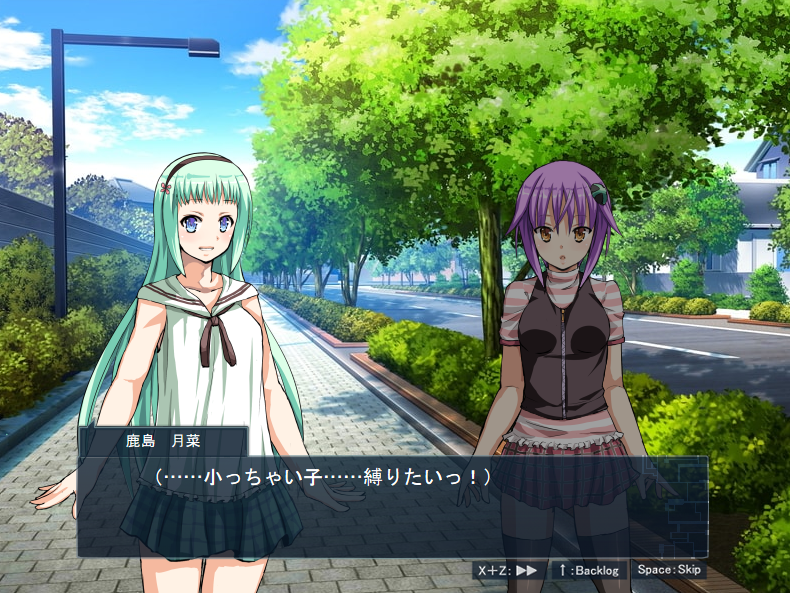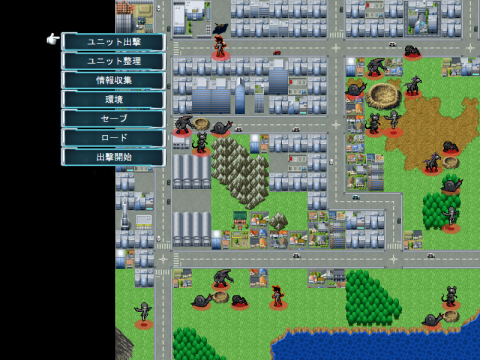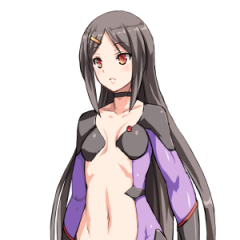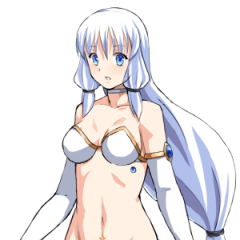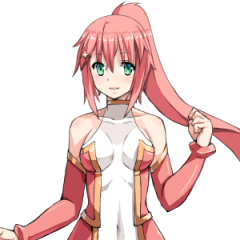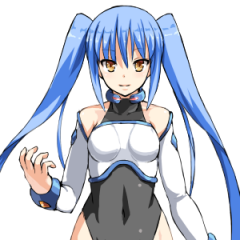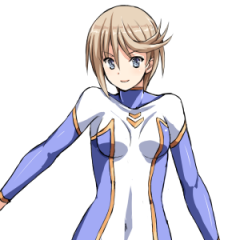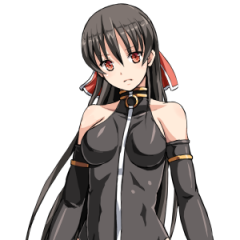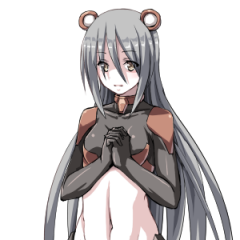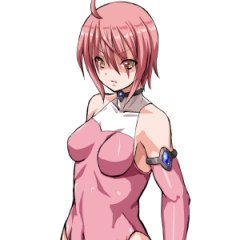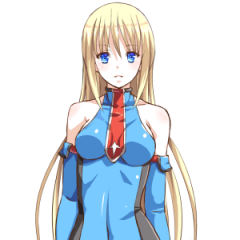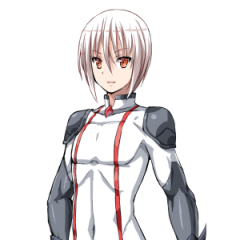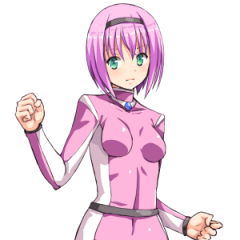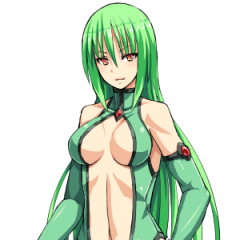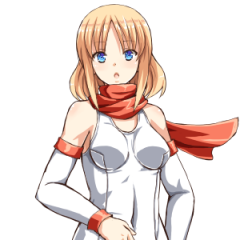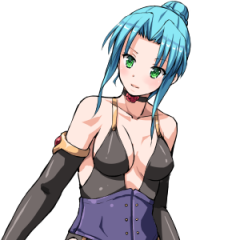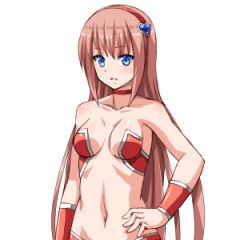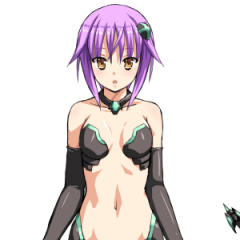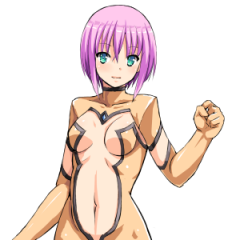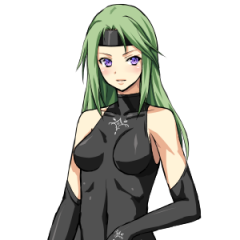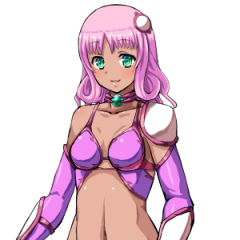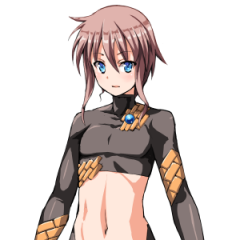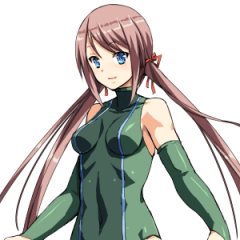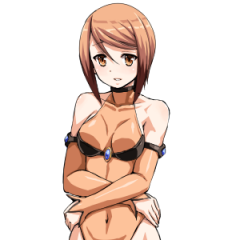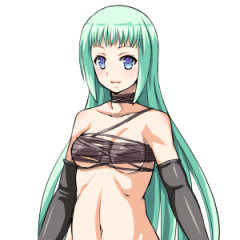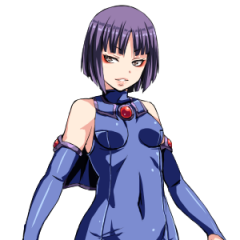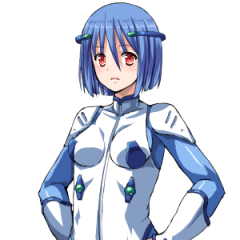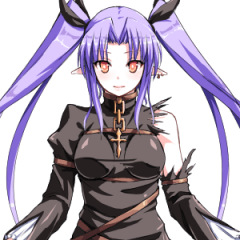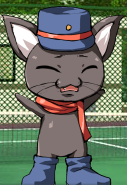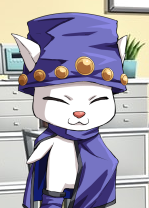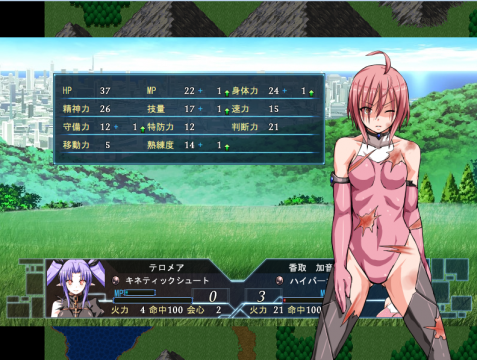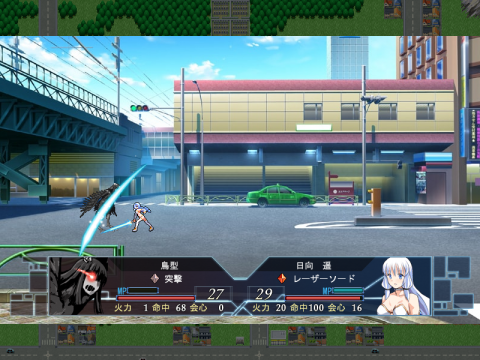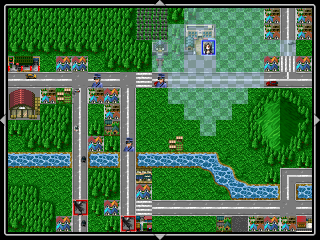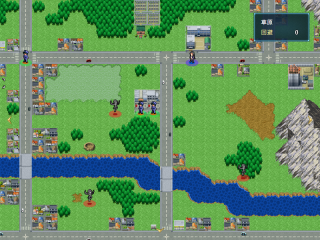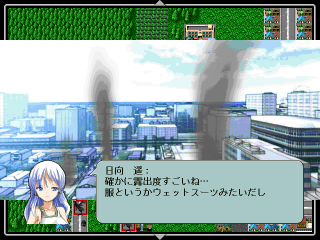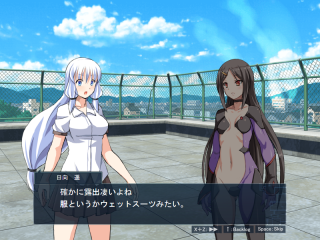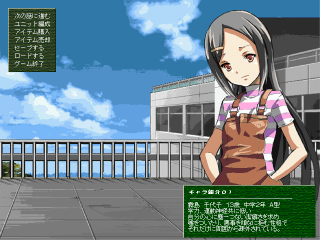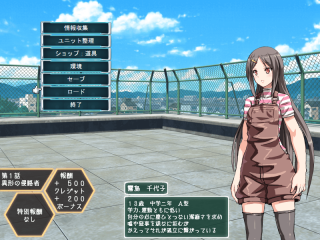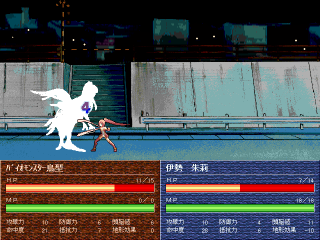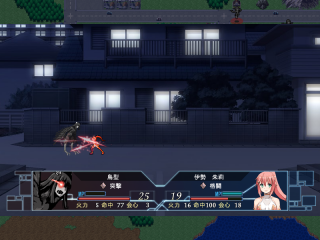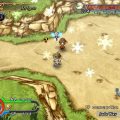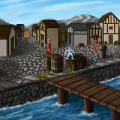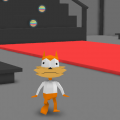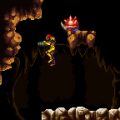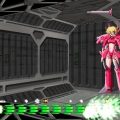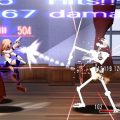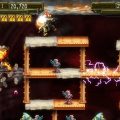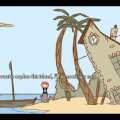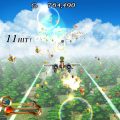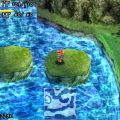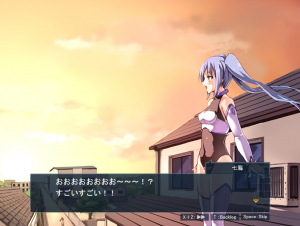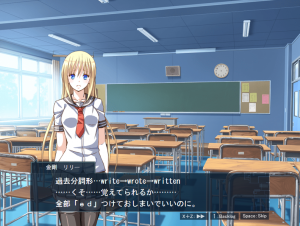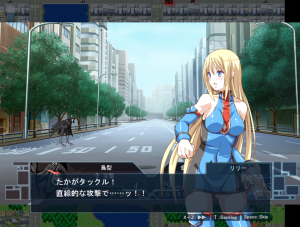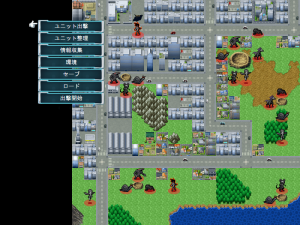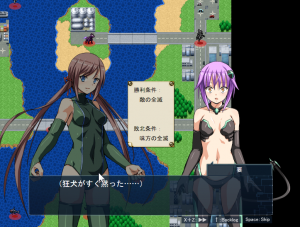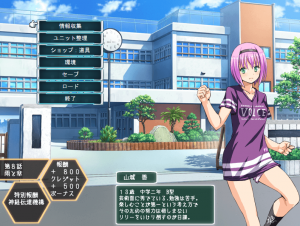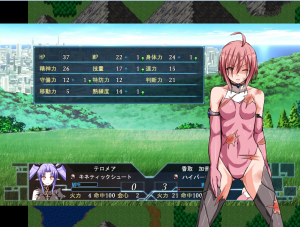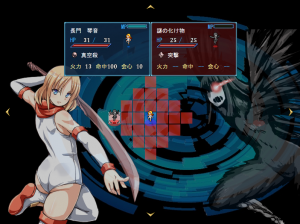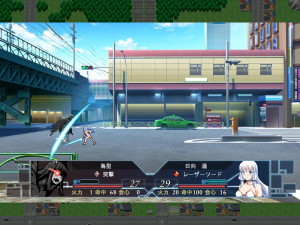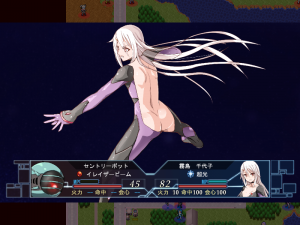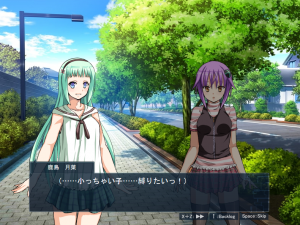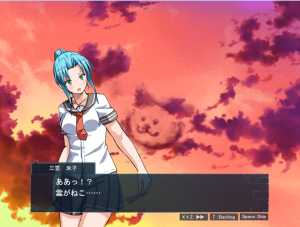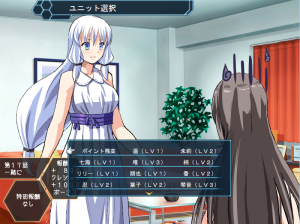In the world of free games, there are countless games released every day, but how many of them are worth playing for more than an hour? Games released for free on the internet tend to lack polish, often being little more than a poor man’s version of more accomplished games. And as they’re often made by teams of one person, meaning that the graphical and sound assets will be pulled from generic royalty-free sources or even stolen from commercial games.
But there are exceptions, many of them coming from the Japanese freeware doujin game scene. Websites like Freem offer a wide selection of exciting free games designed by talented people who wanted to make video games in their spare time, often using engines such as RPG Maker 2000 to facilitate the process of game making. The storytelling can explore off-beaten paths and developers are able to finetune oft-neglected game mechanics for a better player experience. With a little digging, you may find a game as good as or even better than commercial games.
One such game is Shinsetsu Mahou Shoujo, a remake of an older game called Mahou Shoujo, released on February 2, 2018. Developed in SRPG Studio by one person who calls themself TS, Shinsetsu takes place in a modern Japanese city called Kakehashi-chō. Chiyoko and Haruka live everyday lives until they dream of fighting monsters in a Kamen Rider-esque body suit. A cat-like being from outer space named Phi appears and tells them that Biomonsters are attacking their hometown. Only they can save the day by getting injected with a huge syringe and transforming into warriors endowed with special abilities.
Their first battle shows how necessary they are: cops are deployed on the map, but they are unable to deal any damage to the monsters. Only Chiyoko’s and Haruka’s attacks can bring them down.
After the battle, Phi tasks Chiyoko and Haruka with searching out more youths capable of wielding the powers necessary to fend off the Biomonsters. As the title may suggest, the game’s direction seems to be heading into magical girl plots.
However, the work pays tribute to hard science fiction, mecha, and sentai works more than anything else. Anyone familiar with the Kamen Rider franchise and mecha like GaoGaiGar will feel right at home. Even fans of the American superhero film series, The Avengers, will recognize similar themes.
That’s because the story is every anime, manga, video game, and action film blended into one. Mahou Shoujo understands the unique appeal of every Japanese subcultural niche imaginable. It is no stranger to genre shifts and the setting grows larger with each episode – because the story is divided into 51 episodes, just like your favorite anime or sentai series of yesteryear.
The massive cast reflects this desire to cram in as many tropes as possible. 27 people from two middle schools and more are to be the guardians of Earth. While there are more than 30 characters in the game, only the original 27 party members and two mascot characters will be covered in the roster for easier reading.
Characters
South Middle
Kirishima Chiyoko
The protagonist. She is alienated from society, but her close friends like Haruka take care of her. Wields the power of darkness to fight biomonsters.
Hyuuga Haruka
Childhood friend of Chiyoko and fan of hardcore video games. She has a boyfriend, but she seems to care more about Chiyoko than him. Has the power of light.
Ise Akari
The first recruit for the team, she is an underclassman who gets thrown into the battlefield almost immediately. Controls fire.
Haruna Nanami
An underclassman who pretends to be mature but is very into superhero and sentai shenanigans. She is good friends with Akari and uses the power of water.
Iwami Kozue
An upperclassman who is serious about tennis and protecting the city. Uses the power of sword, which manifests in her ability to transform her arm into a blade.
Yashima Yui
Her strong feelings for responsibility and the pain of feeling abandoned by her family define who she is as a person. Manipulates time.
Hizen Imari
A sickly girl who has been in the hospital for a year. She can change into several animal modes for fighting with the power of beast.
Katori Kanon
A delinquent who becomes close with Telomere and Yui over the course of the story. Smashes enemies with the power of gravity.
Private School
Kongou Lily
While she is half-English, her English speaking skills are nil. Part of her school’s Karate Club and the main healer.
Nakajima Sakuya
A close childhood friend of Lily. Part of his school’s Karate Club. Utilizes the power of response to create copies of himself in battle.
Yamashiro Kaori
Shinobu’s twin and the maturer of the two. Uses sound to fight Biomonsters.
Mutsu Youko
Even though she is a middle schooler, she is often mistaken as an adult thanks to her height. She wields the power of earth.
Nagato Kotone
A serious, no-nonsense upperclassman in a cute T-shirt. Cares about Imari a lot and has the power of wind.
Mikasa Yoneko
A mature middle schooler. Can destroy foes on the atomic level with the power of destruction.
Settsu Reina
Her short height makes people think she’s in elementary school. Has a one-sided rivalry with Kotone. Fires specialized bullets from her hand with the power of gun.
Hiei Kaname
A quiet girl who admires Chiyoko from afar. Can reverse the effects of entropy with the power of balance.
North Middle
Yamashiro Shinobu – Kaori’s twin and the more playful of the two. Fights with thunder.
Kii Hiyori
A new character exclusive to Shinsetsu Mahou Shoujo, she controls the power of motion like a ninja.
Kawachi Mao
Her dark skin comes from running for the track and field team. Has a crush on a teacher and assists allies in battle with the power of shield.
Asahi Yuuki
A cute boy who finds himself entangled in a 00s romance comedy anime. He is relegated to a support role in battle, possessing the power of synthesis.
Asahi Shiori
Yuuki’s overprotective sister. Part of the track and field team and capable of superhuman physical feats thanks to the power of strength.
Satsuma Kohaku – A timid girl who is a friend of Shiori’s and wields the power of flowers.
Elementary School
Kashima Luna
An elementary school girl who is very interested in relationship matters for her age. She utilizes the power of thread to bind enemies in their place.
Chinen Saya – A mysterious girl who is perhaps a little too enthusiastic about joining in on the fight against Biomonsters. Has the power of mist.
High School
Hatsune Moka – A high schooler who used to be Kotone’s upperclassman. Her ice powers are deadly to many enemies.
Aliens
Telomere
A blind alien contracted by Phi and Tau to help the team. The original magical warrior, possessing the power of firmament, and hardened in battles against the Biomonsters on her home planet.
Phi
A black catlike alien who instructs Chiyoko to recruit other people into the team.
Tau
A white catlike alien who first appears alongside Yui. He prefers to put people, no matter how unprepared they are, into battle as soon as possible.
Despite the gigantic cast, Shinsetsu Mahou Shoujo’s strength comes from how every single character remains relevant in gameplay and story.
At first glance, Shinsetsu uses a very simplistic Super Robot Wars-styled battle system. You move party members on a map with your keyboard or mouse to attack the enemy. Statistics like how much damage will be dealt on both sides are shown. Elemental weaknesses can be exploited with different attacks. Once your turn is over, enemies will start to move and attack your units. If they can attack, you can choose what kind of attacks to respond with. Unlike most SRPGs however, your unit can’t choose to evade; they can only counterattack or do nothing and receive the blow.
That’s where the complexity begins. Most maps allow you to use all the members you have recruited so far. Some do force you to use certain party members and reinforcements will arrive in the midst of battle. Very few require you to choose only a subset of the cast to fight with. Each member is valuable in their own way, and understanding the role of each unit is key in conquering Shinsetsu Mahou Shoujo’s 50+ distinct maps.
But everyone is fragile. Enemies hit hard and, if given the chance, will obliterate your party in a few turns. It is best to play defensively. While there are no permanent deaths, revival is a late game skill and some maps have lose conditions that depend on the number of fallen units.
As the storyline progresses, new enemy types begin to terrorize you. They are invincible to ordinary attacks and require skills that use up MP. Battles become unwinnable if you don’t conserve your MP. And in later maps, controlling around 30 party members against 50 enemies can be exhausting; some maps can take an hour or longer to complete, which is certainly asking a lot of the player. The game features an easier difficulty mode entitled “Drama” for players more invested in the narrative than the SRPG gameplay, but it is a prodigious undertaking no matter what.
That said, every hard-earned victory on “Real” difficulty feels satisfying. The struggle from both players and characters is felt as they try to complete a map. If any of the characters is critically damaged, their character portrait shows them battered and frightened. In the scenario sections, characters begin to feel mentally destroyed. This combination of story and gameplay invites a special kind of dread not always found in SRPGs, even those with permadeath. Overcoming this despair is very cathartic.
The gameplay and narrative of Shinsetsu Mahou Shoujo are linked in a way that few other SRPGs, commercial or independent, can aspire to. The story can shift genres and raise the stakes for the characters involved while the game constructs more elaborate maps with stronger enemies and terrain that restricts your movement. But it can also shift gears and remind us the cast is mostly a bunch of middle schoolers, as the gameplay morphs seamlessly from epic SRPG battles spanning hours to visual novel-esque choice-driven sections, asking the player to determine where to visit during break at school or which room to share with other girls during a trip. Every one of the characters has their own likes and dislikes, hopes and fears, and friends and rivals to contend with. Even when the work delves deeper into hard science fiction territories, it is fun to read scenes of girls going to the arcade and guys just hanging out. You are reminded you are playing a game about people, not just units on a map.
It is easy to forget that this game was developed by just one person. Shinsetsu Mahou Shoujo is one of the best examples of the potential found in freeware doujin games. It is a riveting work that is able to overcome its humble beginnings with its passion for the art of making good, entertaining video games.
Mahou Shoujo
The original Mahou Shoujo came out on Freem in December 2012 and was developed in SRPG Maker 95, an ancient piece of software (as one can probably guess from its name). All of TS’s games prior to his most successful game Heartium (2016) were developed in this engine, as it was the only viable option that allowed doujin creators to make SRPG games without coding their own engines. Until the release of SRPG Studio, doujin developers like TS simply had to tolerate the limitations inherent to SRPG Maker 95.
And there are many limitations. The resolution is 640×480. It can only display bitmap images in 256 colors and forget playing music that isn’t in the MIDI format. The engine is also unsuited to tell long stretches of story; it lacks a proper environment for cutscenes, so scenes are usually depicted by little more than a background image and character faces plopped on top of a battle map underneath. Battles don’t fare much better. Units move at the speed of molasses. The enemy AI is braindead. Only mouse input is supported. Turns must be manually ended. You are unable to gauge the hit rate, the enemy damage, and their movement from the system. It is everything janky in early SRPGs and more.
As for the actual gameplay itself, the balance is not as polished as the remake. It also has a game over screen that look like it was made in MS Paint.
Otherwise, the script is mostly the same. However, there are no chapter titles in the game. You also sometimes have the option to read more optional dialog in pre-battle scenes; they can get quite wordy, so the remake has excised the bloat.
Playing this game after the remake is in a way like paying respects to your ancestors. There isn’t much to the original that is worth playing for, but it is interesting to see how it began.
